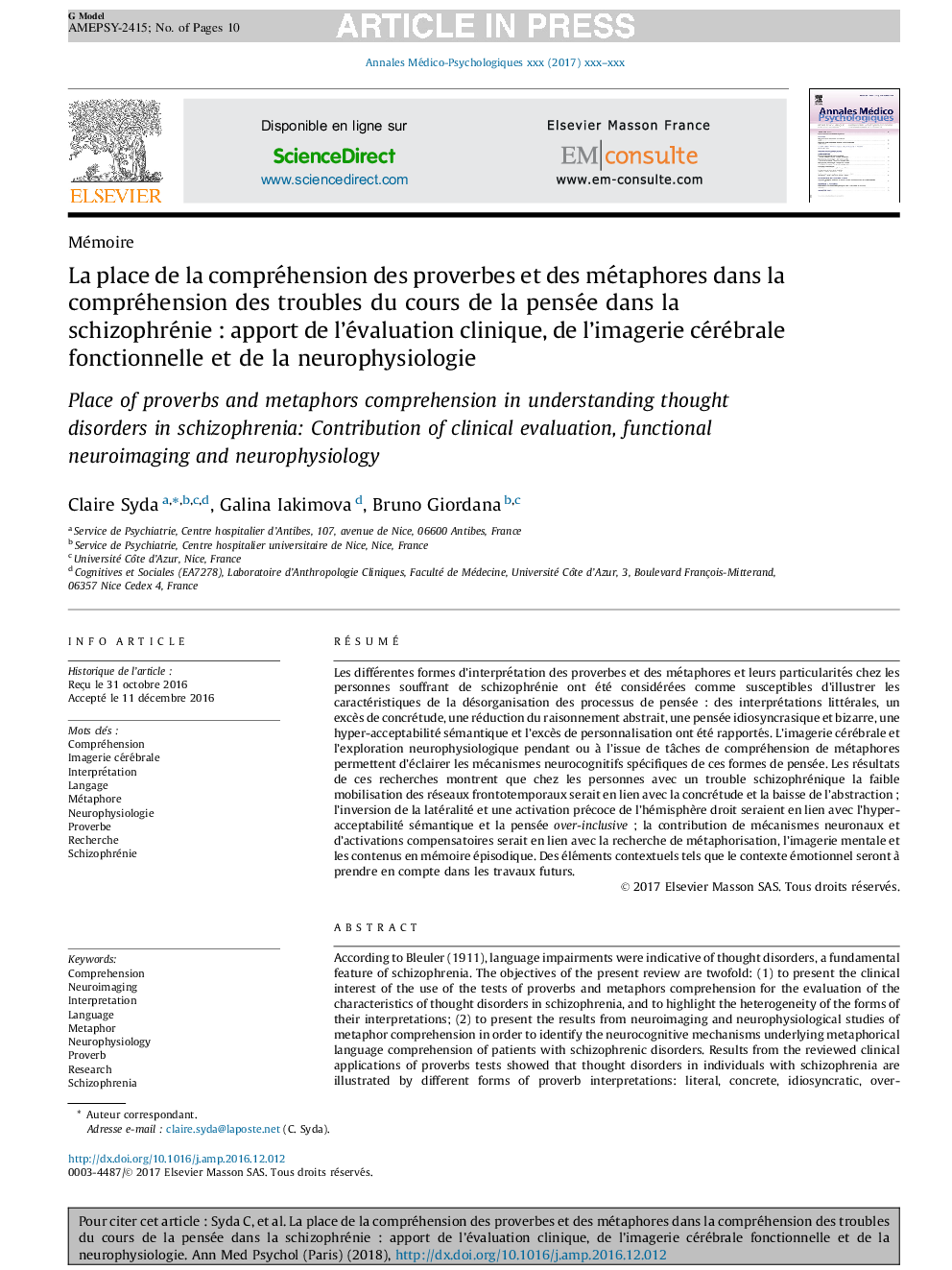| Article ID | Journal | Published Year | Pages | File Type |
|---|---|---|---|---|
| 6785129 | Annales Mdico-psychologiques, revue psychiatrique | 2018 | 10 Pages |
Abstract
According to Bleuler (1911), language impairments were indicative of thought disorders, a fundamental feature of schizophrenia. The objectives of the present review are twofold: (1) to present the clinical interest of the use of the tests of proverbs and metaphors comprehension for the evaluation of the characteristics of thought disorders in schizophrenia, and to highlight the heterogeneity of the forms of their interpretations; (2) to present the results from neuroimaging and neurophysiological studies of metaphor comprehension in order to identify the neurocognitive mechanisms underlying metaphorical language comprehension of patients with schizophrenic disorders. Results from the reviewed clinical applications of proverbs tests showed that thought disorders in individuals with schizophrenia are illustrated by different forms of proverb interpretations: literal, concrete, idiosyncratic, over-inclusiveness and unconventional. Results from the reviewed brain imaging and neurophysiological studies showed that these different forms of figurative misinterpretations may be related to different neurocognitive mechanisms: concreteness appears to be related to the dysfunction of the left inferior frontal gyrus and inverted brain lateralization during metaphor processing in individuals with schizophrenia compared to healthy individuals. During novel metaphor comprehension, which is highly effortful, individuals with schizophrenia, relative to controls, demonstrate increased activation of the right precuneus, a region that mediates complex and highly integrated functions including retrieval of episodic memory and mental imagery. These results may suggest that individuals with schizophrenia use mental imagery to support comprehension of both literal and metaphoric language. Furthermore, it was demonstrated that over-inclusive thinking, which is exhibited by individuals with schizophrenia during figurative language comprehension, could be related to very early right hemispheric hyper-activation (when a left early activation is expected) and to reduced bilateral brain activity during semantic processing. Such as reversed brain activation may explain why the individuals with schizophrenia are relatively over reliant on early-stage coarse or large semantic processing and may be prone to form meanings that are idiosyncratic and highly unconventional.
Keywords
Related Topics
Health Sciences
Medicine and Dentistry
Psychiatry and Mental Health
Authors
Claire Syda, Galina Iakimova, Bruno Giordana,
